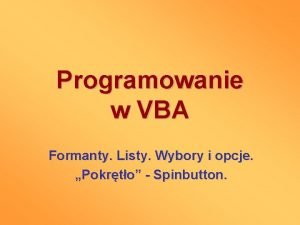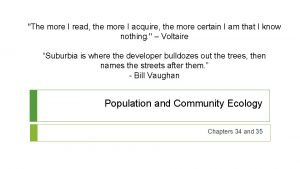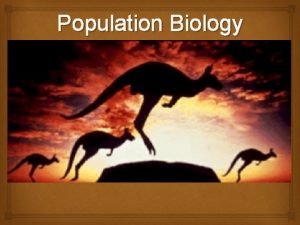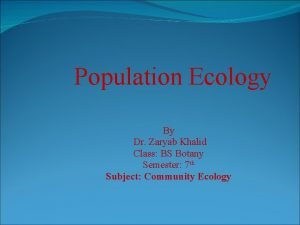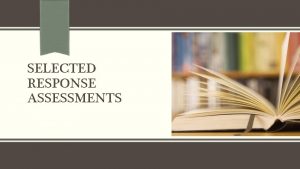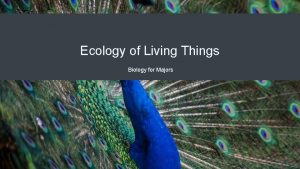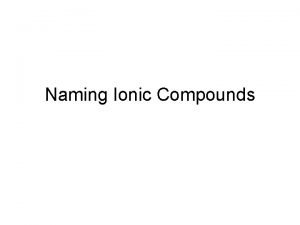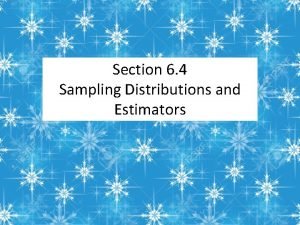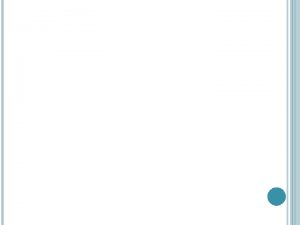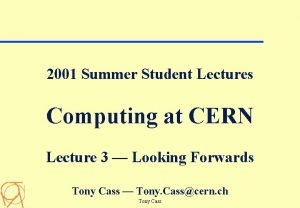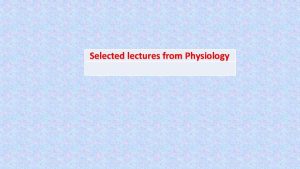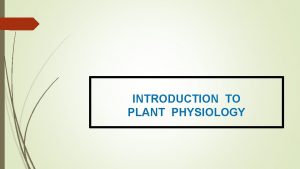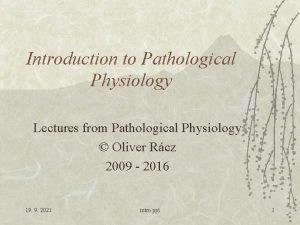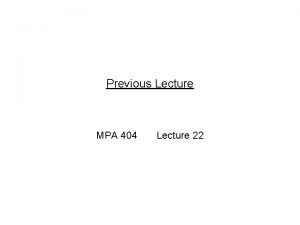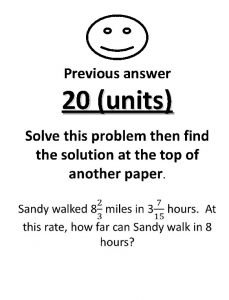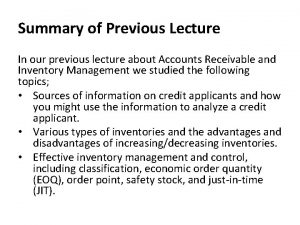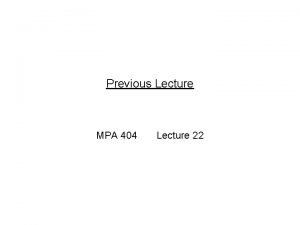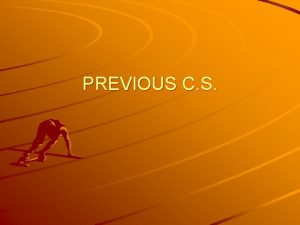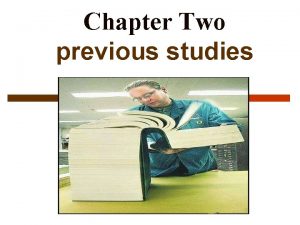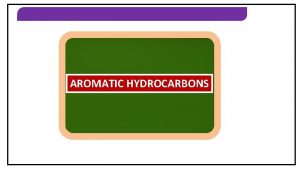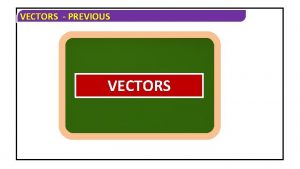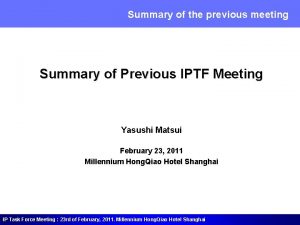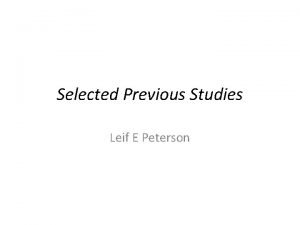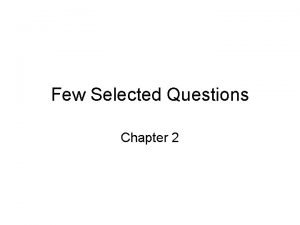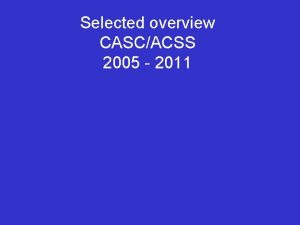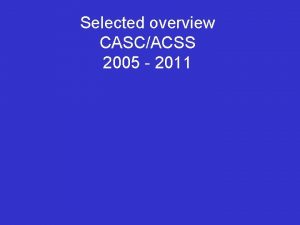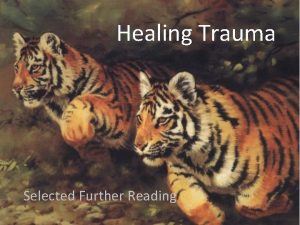Selected lectures from Physiology Information from previous lectures































- Slides: 31

Selected lectures from Physiology

Information from previous lectures: Type of secretion of hormones - summary: • Constant secretion – hormones of glandula thyreoidea • Pulsatile secretion – Gn. RH (gonadoliberin) • circadian secretion (latin: circa diem = approximately 24 h) – hormons of adrenal cortex • monthly fluctuation – estrogens, testosteron in saliva • „en demande“ (according to need - demands) – e. g. Insuline and regulation blood glucose

Records of breathing and circulatory parameters waves (from plethysmomanometer - Peňáz method)

Biorhythms - studied by chronobiology as a special branch of physiology research In humans and other mammals, processes such as sleep/awake and feed/fast cycles, body temperature oscillations, hormonal secretions and metabolic events occur in a circadian manner and are ruled by biological clock Periods of rhythms (a frequency with which the parametr is repeated): Ultradian period – period is shorter than 24 hours (e. g. : 10 sec rhythm in breathing) Circadian period – period is 24 h (sleep/awake…. . from Latin circa diemabout a day) Infradian period – period is longer than 24 h (the menstrual cycle)

Pineal gland • The pineal gland coordinates circadian (daily) rhythms of dark/light (day-night) cycles by secreting the hormone melatonin. Darkness stimulates its release.

Macrostructure: -it is a small gland found of posterior end of the corpus callosum, forming a section of the roof in the posterior wall of the third ventricle

• Microstructure of pineal gland : - is composed of 2 types of neural cells: pinealocytes (specialized secretory neurons) + glial support cells : - it has a very rich blood supply that forms a network of capillaries surrounded by the pinealocytes : - it receives innervation from many parts of the brain, but the main connections are with: Suprachiasmatic nuclei (SCN) Retina Sympathetic system (multisynaptic sympathetic way: paraventricular nucleus in hypothalamus + upper sympathetic cervical ganglion – SCG; releas norepinephrin-beta adrenergic receptors –stimulate c. AMP-activate gene expression for gen coding AA-NAT=arylalkylamin-N-acetyltranspherase)

Master circadian pacemaker • Information about the external light-dark cycle was passed via the retinohypothalamic tract – sensory input integrating centers in the thalamus, but also to the hypothalamic suprachiasmatic nucleus • SCN – is a bilaterally paired structure with high cell body density located to the third ventricle and directly atop the optic chiasm. • It comprises about 50 000 neurons in humans (in rodents 20 000) • Plays critical role in generation of mammalian circadian rhythms • (in experiments – animal with ablated SCN become behaviorally and physiologically arrhythmic. Critically, transplanting isolated SCN tissue into SCN-lesioned animals restores circadian rhythmicity)

The molecular clockwork • Period genes (PER) was the first discovered clock gene which is conversed from fruit flies to humans……… 1971 (Konopka and Benzer) • In the past decades our knowledge of the molecular clockwork has been significantly expanded • Transcriptional-translation feed-back loop • Two helix-loop-helix transcription factors: CLOCK – circadian locomotor output cycles kaput + BMAL 1 (ARNTL) – brain and muscle aryl hydrocarbon receptor nuclear translocator. Both form heterodimers via their PAS domein – PER-ARNTL-SIM binding. Activates E-box-element containing gens. Complexes CLOCK+BMAL 1 activate transcription of PER and CRY genes during the day. PERs and CRYs translocate into the nucleus and forms inhibitory complexes, PER/CRY complexes accumulate and does their inhibitory effect on CLOCK-BMAL 1 activity, shutting down Per and Cry transcription during the night.

In humans: circadian rhythm • Perioda of rhythm 25± 1. 5 hours • • • Synchronization vie external conditions: E. g. Light/dark phase of day Or fluctuation of external temperature Or cycle of food intake Or social stimulus • Entry: retinal ganglionic cells – photopsine – melanopsin (blue wavelenght) - SCN – main oscilator • Pathway: neuronal and humoral


• PER – period gene • CLOCK – circadian locomotor output cycles kaput • BMAL 1 (ARNTL) – brain and muscle aryl hydrocarbon receptor nuclear translocator • PAS domena – PER-ARNTL-SIM • E-Box –controlled genes • CRY genes – cryptochrome

Pineal gland - Function: • The pineal gland synthesizes and secrets the hormone MELATONIN (NOT melanin – the brown skin pigment) Melatonin is modified form of the aminoacid tryptophan (4 steps of biosynthesis - serotonin – enzyme AA-NAT=arylalkylamin-Nacetyltranspherase : activity on the night, light – inhibited – acetylation –methylation …. melatonin

• The suprachiasmatic nucleus in the hypothalamus serves as an „intrinsic clock“ which interacts with an external rhythm stimulus, in this case light, to coordinate melatonin release with the external daynight cycle • This system allows the conversion of inhibitory light stimuli into a hormonal stimulus that can regulate: : Day-night (circadian rhythm) : Seasonal breeding rhythms (e. g. deer, birds)


Effects of melatonin – pleiotropic effect Melatonin has 3 main effects: • It resets the SCN • It induces sleep (hypnotic effect) • It influences the hypothalamus, especially the reproductive function Circadian rhythms influence almost every cell in the body. Hormones are secreted from the hypothalamus, pituitary gland gonads with a circadian rhythm-e. g. : CRH, ACTH-peak early in the morning


Jet lag syndrome The pineal gland has evolved to allow adaptation to changing day length: • When people leaves his/her home country the SCN and pineal gland are synchronized: at night, darkness and SCN activation stimulate melatonin production, inducing sleep • If the person flies across time zones, the SCN continues to oscillate in accordance with the previous time zone, which means that the timing of melatonin production (and, therefore, tiredness) does not change • At a rate of adjustment of a couple of hours a day, the SCN adapts to a new time zone

Jat leg syndrome - treatment • Taking oral melatonin can shorten the period of jet lag • Melatonin should be taken at the times of darkness in the new time zone whilst on the plane and for several days at the destination • For shift work, the melatonin should be taken during the period of desired sleep • The SCN is reset more quickly and the body becomes resynchronized

Seasonal affective disorder • Effect of melatonin also on an anual rhythm - season rhythm - in winter – a little light, elevated of concentration of melatonin – internal dyssynchronization ……. . incresed incidence of depression

Sleep disorder • Sleep delay (problem to sleep at night - delayed sleep) –problem: sleep at night, wake up in the morning is wrong. Treatment: administered melatonin when he wants to sleep • Phase advance – go to sleep without any problems, but the waking up too early in the morning. Treatment: bright light exposure at a time when he wants to sleep, but it should still be awake)

• In the abscence of light signals, circadian rhythms still exist but are not synchronized with the day-night cycle. • The suprachiasmatic nucleus in the hypothalamus serves as an „intrinsic clock“ which interacts with an external rhythm stimulus, in this case light, to coordinate melatonin release with the external daynight cycle • This system allows the conversion of inhibitory light stimuli into a hormonal stimulus that can regulate: : Day-night (circadian rhythm) : Seasonal breeding rhythms (e. g. deer, birds)

• transition to summer or winter time • shift work (porter, in hospital – nurse, doctor – working during the night time) • Resynchronisation internal clock system with the external part – diseaseas: • fatique (tiredness) - sleep disruption - lack of appetite – gastric ulsers – stress – hypertension – obesity – changes in behaviour



Anthony H Tsang et al. Journal of Molecular Endocrinology (2014) 52, R 1–R 16


vyplachování

Sagital section of brain in central line Hypothalamus


References: • Russel J. Reiter, Dun Xian. Tan, Ahmet Korkmaz and Sergio A. Rosales-Corral. Melatonin and stable circadian rhythms optimize maternal, placental and fetal physiology. Human Reproduction Update, Vol. 20, No. 2 pp. 293– 307, 2014 doi: 10. 1093/humupd/dmt 054 • SILBERNAGL, Stefan a Agamemnon DESPOPOULOS. Color atlas of physiology. 6 th ed. , completely rev. and expanded. Stuttgart: Thieme, c 2009. ISBN 978 -3 -13545006 -3. SILBERNAGL, Stefan a Agamemnon DESPOPOULOS. Color atlas of physiology. 6 th ed. , completely rev. and expanded. Stuttgart: Thieme, c 2009. ISBN 978 -3 -13 -545006 -3. • Anthony A Tsang, Johanna L Barclay and Henrik Oster. Interactions between endocrine and circadian systems. Journal of Molecular Endocrinology, 2014, vol. 52, pp. R 1 -R 16. doi: 10. 1530/JME-13 -0118 • JAVORKA, Kamil. Lekárska fyziologia. 3, prep. a dopl. vyd. Martin: Vydavateľstvo Osveta, c 2009. ISBN 978 -80 -8063 -291 -5.
 Rbc formation stages
Rbc formation stages Sprite lfs
Sprite lfs Vba combobox selected item
Vba combobox selected item K selected
K selected Word basic
Word basic Gwen harwood: selected poems
Gwen harwood: selected poems Survivorship curve for k selected species
Survivorship curve for k selected species Selected response tasks
Selected response tasks K selected species survivorship curve
K selected species survivorship curve R-selected species
R-selected species Italy population 1939
Italy population 1939 Dreamweaver php tutorials
Dreamweaver php tutorials Selected response assessment
Selected response assessment Congratulations you have been selected
Congratulations you have been selected The bsr and the io modes of 8255 is selected by the
The bsr and the io modes of 8255 is selected by the Example of r selected species
Example of r selected species Ionic bonding worksheet answers
Ionic bonding worksheet answers Not only the students but also their instructor
Not only the students but also their instructor Qualitative and quantitative research
Qualitative and quantitative research Three randomly selected households are surveyed 2 6 7
Three randomly selected households are surveyed 2 6 7 Allergy therapy makes bees go away
Allergy therapy makes bees go away Simplest measure of dispersion
Simplest measure of dispersion Words images objects qualitative or quantitative
Words images objects qualitative or quantitative Web engineering lectures ppt
Web engineering lectures ppt Cern summer school lectures
Cern summer school lectures Comsats virtual campus lectures
Comsats virtual campus lectures Neonatology lectures
Neonatology lectures Theory of translation lectures
Theory of translation lectures Gpoint c++
Gpoint c++ Introduction to recursion
Introduction to recursion Cs614 short lectures
Cs614 short lectures Radio astronomy lectures
Radio astronomy lectures


